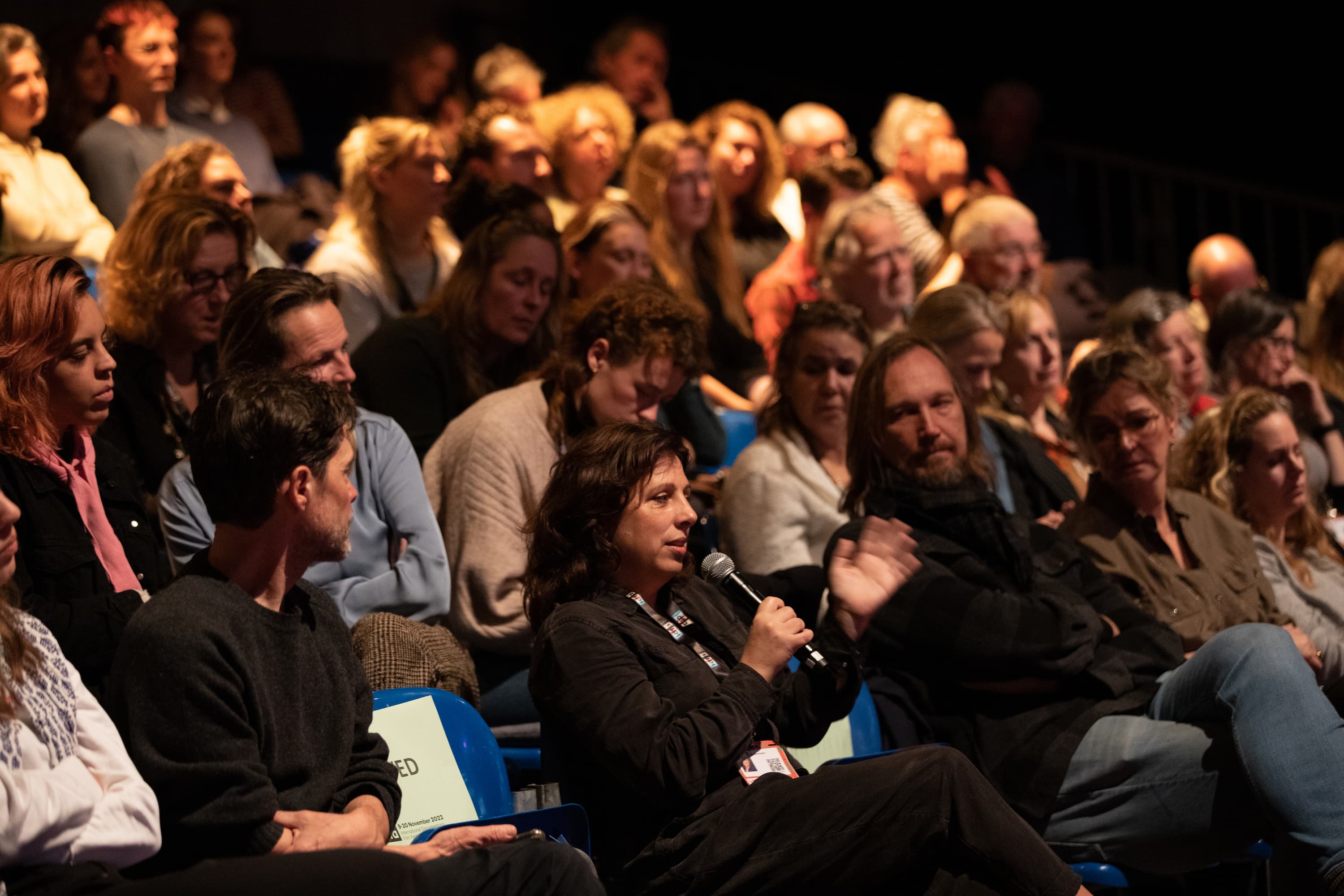
A deeper look at the marketing behind National Geographic Documentary Films
Unique insight into National Geographic’s impactful documentary film campaigns
Taking place at ITA on November 15, The Industry Talk ‘A deeper look at the marketing behind National Geographic Documentary Films’ delved into the brand’s impactful campaigns that sparked global interest in films on urgent topics about our planet.
During the talk, Chris Albert (National Geographic’s EVP of Marketing and Communications) took on two of the company’s most striking case studies and divulged the thinking and strategies that informed them. Finally, IDFA’s Artistic Director Orwa Nyrabia offered Albert a creative challenge to level the playing field: How would you create an impact with a modest €20,000 marketing budget?
Chris Albert launched the talk with a short video relaying the highlights of National Geographic Documentary Films collection, since its founding in 2016. On the motivation behind this tangent of National Geographic’s efforts, Albert recounts our current era as “a time when factual accuracy and documentary film is more vital than ever.”
Impactful campaign case studies
Shifting to exploring two acclaimed case studies, Albert presented the lauded story of creation and destruction, of love and lava Fire of Love. The documentary film follows the story of French volcanologists, Katia and Maurice Krafft, “who died as explosively as they lived—chasing eruptions and capturing hundreds of hours of footage, leaving a legacy that forever enriched our knowledge of the natural world.” Albert dissected the strategy that enabled the film to navigate a crowded field and be dubbed ‘The Year’s Best Documentary.’ The key to the campaign was the compounding of powerful love stories—between two extraordinary people, and between people and our remarkable planet.
Next to an evocative campaign, National Geographic rolled out a catalogue of tactics to get word out. From a prestigious premiere at Sundance, followed by making the film as widely available as possible, to partnering with schools and institutions to engage eager audiences with the subjects of science and geography. Albert revealed the importance of appealing to audiences with compelling storytelling and throwing a wide net to encourage engagement.
Award-winning The Territory, in turn, presents a bold attempt to take the fight of the Ure-eu-wau-wau people (who closely collaborated on the project) to the wider world. The film documents an indigenous community in Brazil whose land is being encroached on by farmers and facing deforestation, and their attempts to protect it. Armed with a strong impact campaign, the film set out with very clear goals: “to amplify indigenous voices, protect indigenous territory, and advance strategic policies.” The marketing strategies included developing discussion guides for schools to address Amazonian deforestation and indigenous rights, as well as the hands-on campaigning to get anti-deforestations laws passed in the European Union.
The takeaway is an impact campaign that links to real world concerns and tangible effects. Orwa Nyrabia reflected, “I find this a very important learning for any filmmaker, to think about what we call the angle in journalism.” Albert concurred: “it comes down to storytelling that matters.”
Innovative ideas for filmmakers with smaller budgets
Groundbreaking impact campaigns and award-winning marketing plans may be excellent learning opportunities, but what can this mean for an independent filmmaker without a considerable marketing budget? Considering smaller-scale independent filmmakers and those from lesser represented communities, Orwa Nyrabia puts forward a challenge for Chris Albert: “I want to pick your brain. There’s a film with only €20,000 budget for promotion, which everyone needs to see. What would you go?”
Chris Albert was more than happy to take on the question, recounting “great question! I think I would do two key things: Spend €15,000 on a very rudimentary website to send interested people to. I’d include very simple press notes, a biography of the filmmaker, and the film trailer. And then I’d spend the rest of the budget on travel: Going to festival, meeting people, meeting interested parties, tap into networks of people. If you get the right people to see it, that’s how you will get success. The great thing about documentary is the community is very small, so you can reach people very quickly.”
Nyrabia reflects on Albert’s line of thought: “The focus on travel surprised me. When I was an independent producer, I ran around, trying to get the community to recognize that I was working to get good films out there. They would ask me: ‘How can I help?’ And I’d get totally lost: ‘I don’t know! You tell me’.” Providing concluding clarity, Albert chimed in: “I would say: ‘Do you have ten people you can send my film to, and cc me?’ It’s best to be concrete, and networking is the most important.”
The room continued to picked at Albert’s mind with additional questions regarding developing discussions guides and crafting buzz—resounding in a compelling hour of marketing insight for documentary filmmakers at large.
